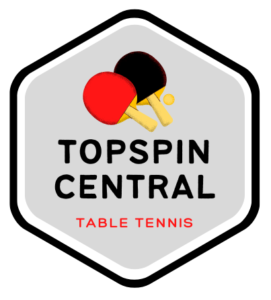If you’ve been playing table tennis for a decent amount of time and are into trying different types of blades and rubbers to maximise your performance, then you’ve probably come across the term “boosting”. In this article, I’ll clear up all the mysteries surrounding “boosted rubber” so you know everything you need to about this practice.
What are Rubber “Boosters” in Table Tennis?
Boosters are liquids that are applied to the sponge of the paddle rubber in ping pong to increase the thickness with the aim of improving the speed and spin of the ball. Some of the most popular boosters include: Falco Temp Booster, Haifu Seamoon Booster and Dianchi Booster.
Previously, many players used “speed glue” to attach the rubber to the blade of the paddle. This substance contained highly volatile organic compounds known as VOCs to create a “trampoline-effect” on the rubber which increased the level of spin and speed that could be applied to the ball. It was also known to provide very good feedback to the player which was useful in increasing the feeling of the ball to aid development. However, speed glue was banned in September 2008 by the ITTF due to the dangers associated with VOCs.
Boosters have since become very popular and are widely available. They are usually supplied in 100-250 mL bottles and are commonly used on Chinese-style rubbers such as DHS Hurricane.

Is Boosting Rubber Allowed?
The ITTF states that the covering material of the paddle should only be used as authorised by the ITTF without any physical, chemical or other treatment which changes or modifies the playing properties. Based on this rule, boosters are not allowed in official competitions.
However, the ITTF does allow players to use “factory tuned rubber”. That’s why there is a bit of ambiguity around the rule as some factories can tune or “boost” the rubber to the player’s specification.
The issue is that boosted rubber is very hard to detect and consequently disqualify players. The ITTF has a detection limit of 5 ppm for the VOC rate, and boosters contain a very low level of VOCs so it is hard to prove scientifically if the rubber has been boosted.
It can be easier though to hear if the rubber has been boosted as the ball sounds much louder when it hits the paddle and it also has a higher pitch sound. However, this isn’t enough to actually prove the rubber has been boosted.
Popular Rubber Boosters
The three most popular rubber boosters are:
- Falco Temp Booster
- Haifu Seamoon Booster
- Bianchi Booster
How Long Does Boosted Rubber Last?
Boosted rubber usually lasts around 25 hours of playing before the effect start to diminish and the rubber will have returned to an “un-boosted” state after approximately 50 hours of playing. Even if the paddle is not used, the boosting-effect will start to diminish after a few weeks.
Do All Rubbers Need Boosting?
Chinese rubbers such as DHS Hurricane, Friendship 729 and Yinhe Big Dipper are the most common types of rubber which benefit from boosting. European/ Japanese tensor-style rubber such as Butterfly Tenergy are generally not boosted.
Chinese rubbers have a harder sponge layer which can reduce the feel for the ball and that’s why a lot of players choose the boost them. European rubbers already have a “trampoline-like” effect on the ball due to their high tension which is why it’s rare that they will be boosted.
“Boosters” are useful for breaking-in harder and denser Chinese rubbers to make the sponge softer and give it a similar effect to the tensor style rubbers.
Should I Boost the Rubber on my Paddle?
This is a personal choice, but my answer is no. Boosters, despite having lower VOC content than speed-glue, boosters are still harmful chemicals. They are also not allowed in ITTF competitions. If you are finding that Chinese rubbers are too hard and difficult to play with, then instead try a tensor-style rubber.
Many professionals across the world use European/ Japanese tensor style rubbers instead of Chinese rubbers and find that they offer excellent performance.
You can also use factory-tuned Chinese rubbers such as DHS Hurricane 2 Neo which effectively come “pre-boosted” which means you don’t have to expose yourself to the booster. The effect will wear off over time, but it’s a better option than boosting the rubber yourself in my opinion.
